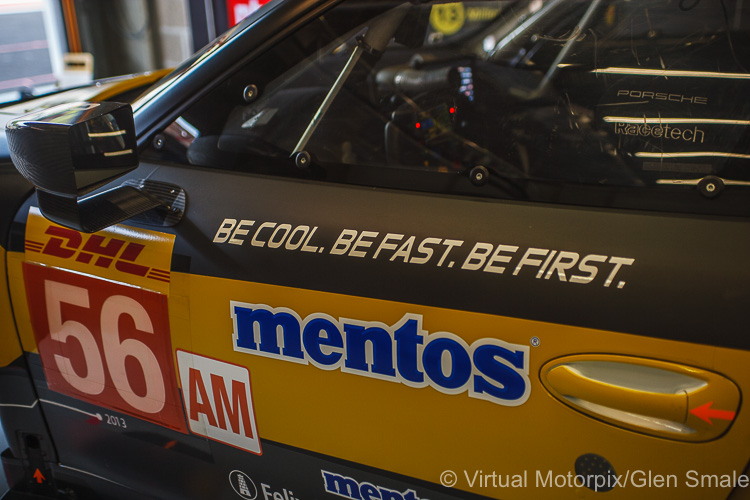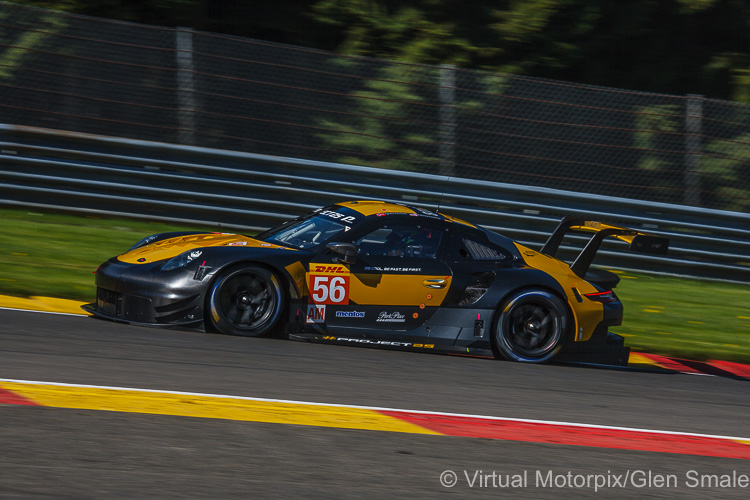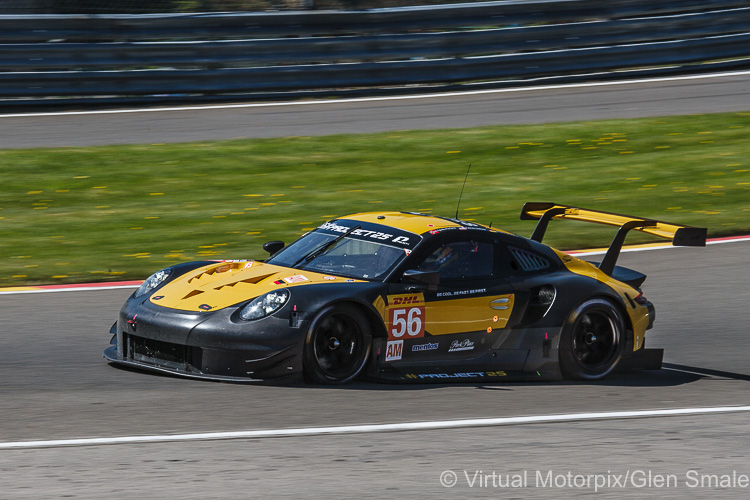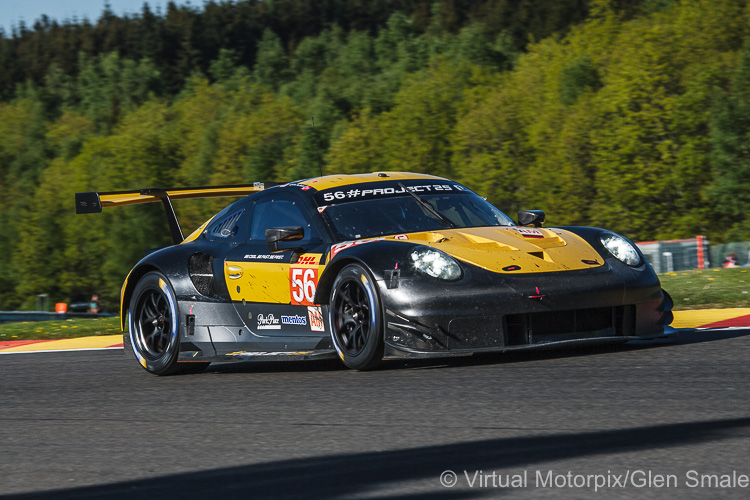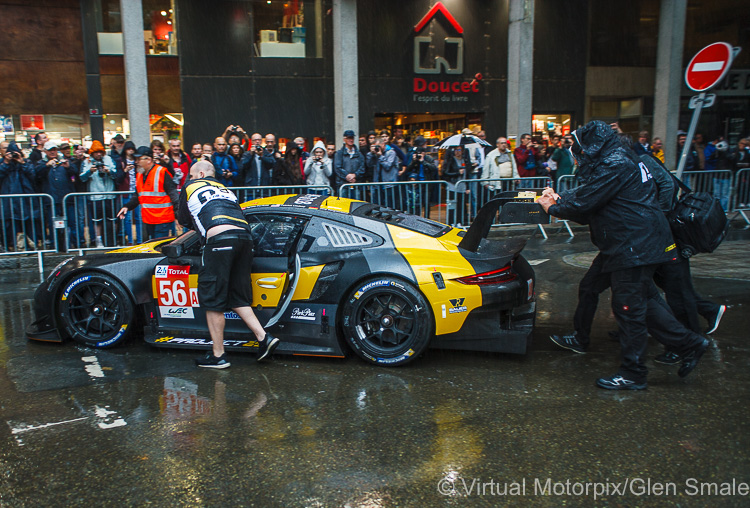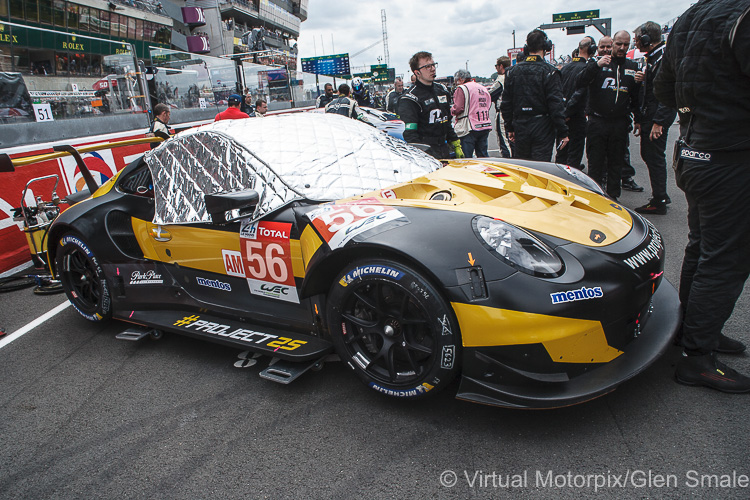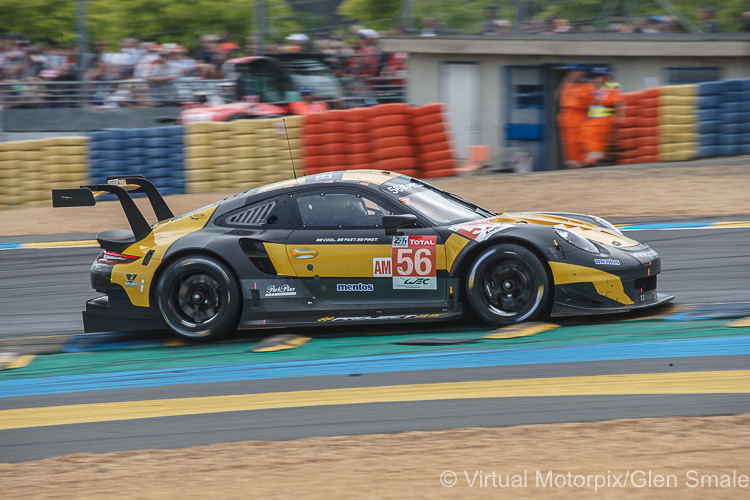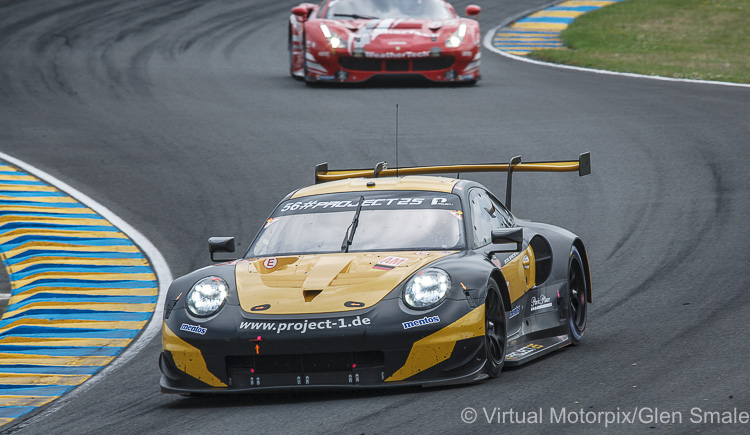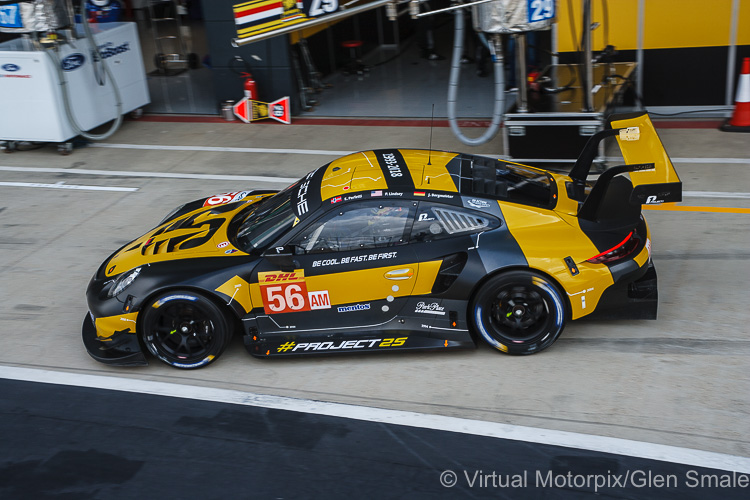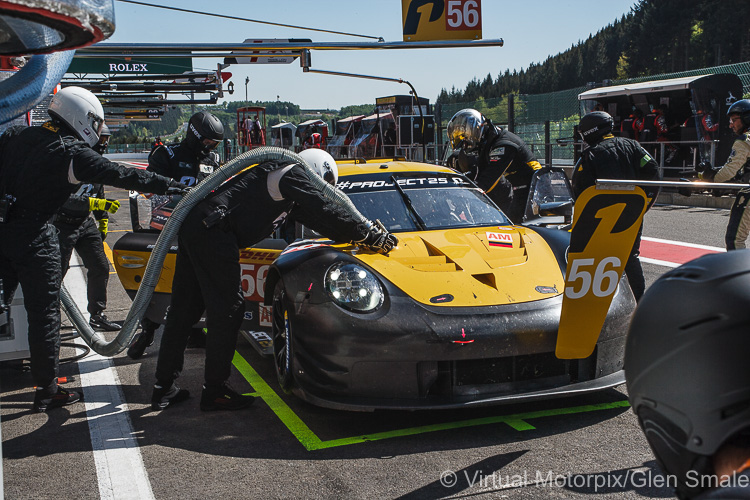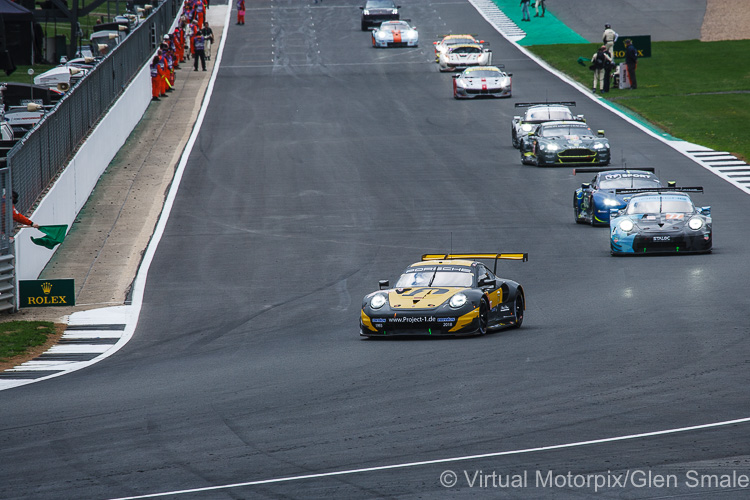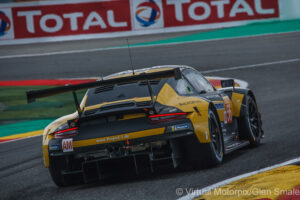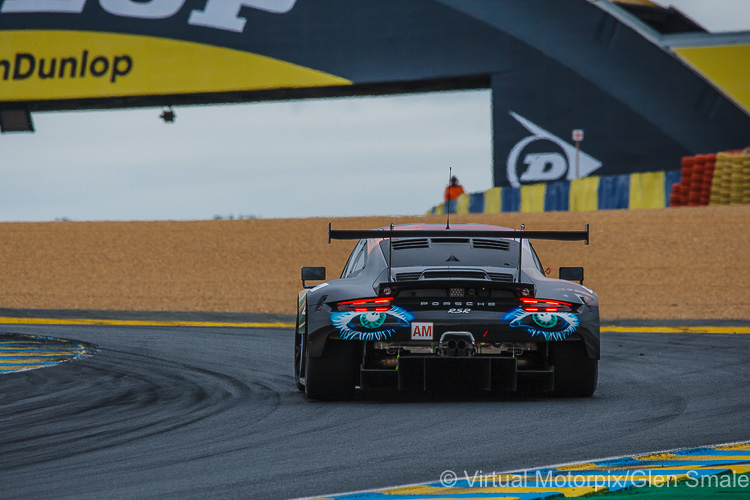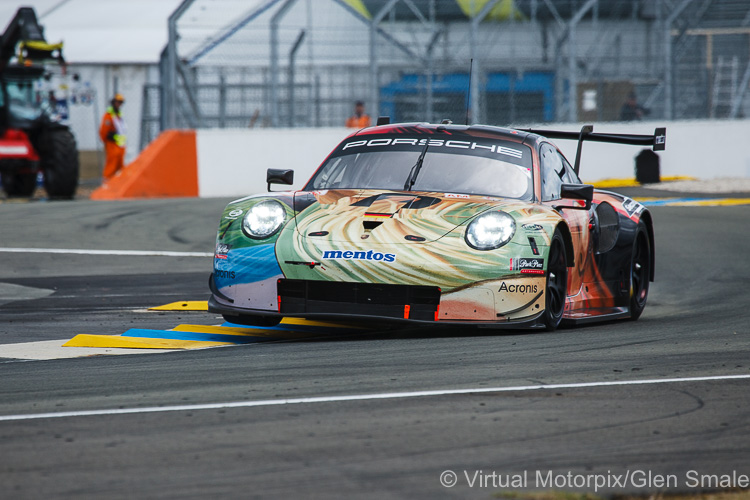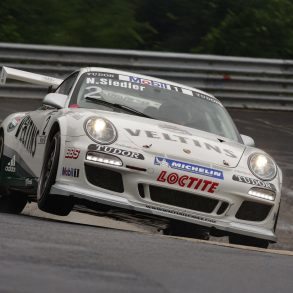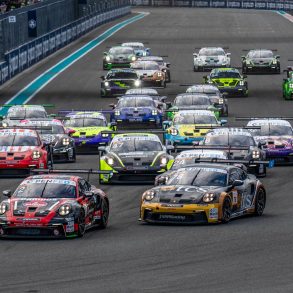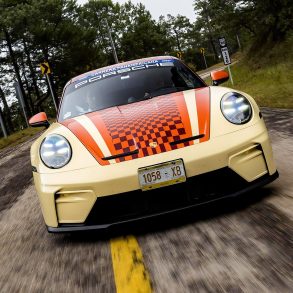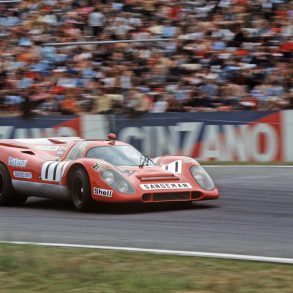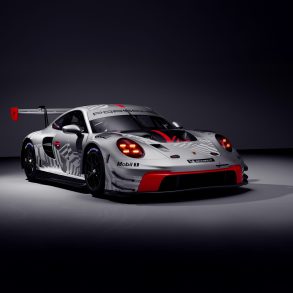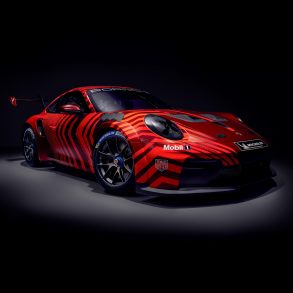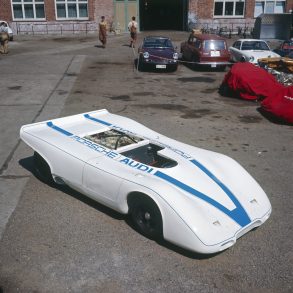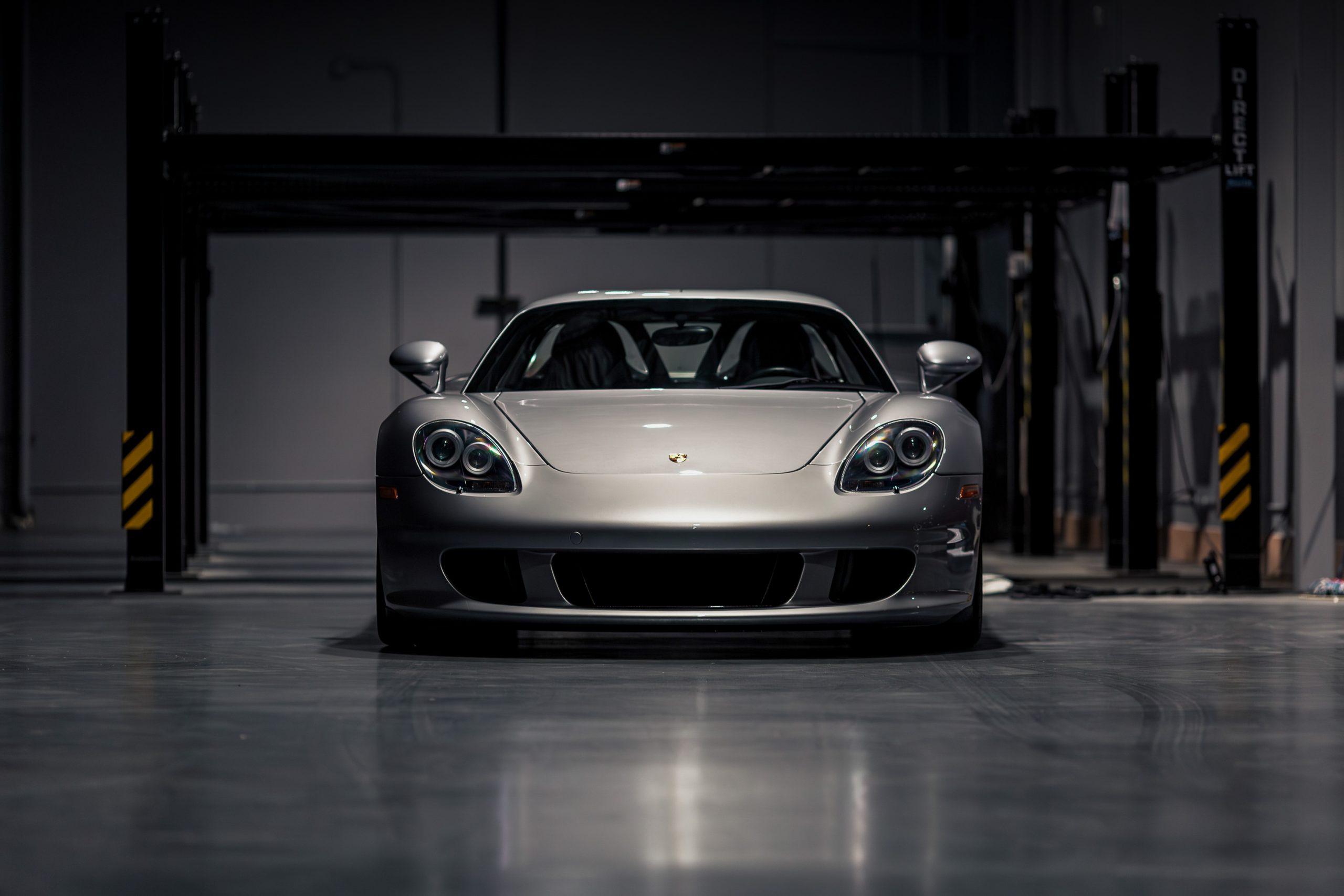Project 1 burst onto the World Endurance Championship (WEC) scene at the start of the 2018 Super Season. We covered their arrival on Porsche Road & Race in A New Team On The Block, and What You Need To Know About Team Project 1. While their arrival on the WEC scene might have been new for the team, they had been around for a quarter century before that, quietly building experience and racking up victories in many other race series. The team’s motto, Be Cool Be Fast Be First, really captures the aura in the pit garage as there is little sign of stress, and the interaction between team members is relaxed, confident and professional.
At the same time as the team entered the WEC arena in 2018, they were celebrating their 25th anniversary in motorsport. Although the step up to WEC represented their biggest commitment to date, the team from Lohne, Germany, had already enjoyed many successful years of participation in the Carrera Cup Deutschland, Mobil 1 Supercup and the ELMS. Project 1 spokesman, Jan Bodenbach, explains how the team adapted to the demands of the WEC, “For the one make series, the Carrera Cup and Supercup, we outsourced this capacity. Here we cooperate with Fach Autotech and JBR Motorsport, who are quite experienced in Cup racing. They do the car preparation and the logistics for us, and at the track we do the engineering, the team management and the sharing of the mechanics. The WEC and ELMS cars are prepared by Project 1, there is nobody else involved, this is just us.”
Project 1 runs six Porsches, two each in the Carrera Cup and Supercup, and one each in the ELMS and WEC. Bodenbach again, “In the beginning [2018], it was a lot more work for us because we had to organise not only our team, but we had to organise three teams. So, we had quite a high workload in the first month, but as the season got going the workload reduced because everyone knew what to do.”
Running six Porsches requires quite a lot of workshop space, but as Bodenbach explained, “The cars are not all in our workshop so it is okay, we just swapped from Cup cars to RSR, this has been the only change in our workshop.” Project 1 started with the Carrera Trophy (which it was previously known as), before moving up the Carrera Cup and the Supercup until 2018, which is when they added the WEC to their activities. “We have done some endurance racing in Dubai with a GT3 R in 2011 and we did the Porsche World Cup which was at the Nordschleife in 2012,” he added.
But the jump up to the WEC was a much bigger step than they had made at any time previously. The first WEC race for the team, the 2018 Spa 6 Hours, was also the opening round of the inaugural 2018/2019 WEC Super Season. “The first race at Spa in 2018 was quite hard because it was a mega step to come from the one make series into a world championship, and we all had to adapt. We had a lot of help from the WEC to make it work, but the problem at the first race was that we were always one-and-a-half hours behind the timetable, and we couldn’t catch up the whole weekend. Once we were all used to the WEC and what the world championship meant, we got into a routine and we could improve our systems,” Bodenbach revealed.
How the Project 1 WEC team came about
Patrick Lindsey outlined how it all started, “A few manufacturers came to us when we were figuring out what we were going to do for the 2016 season. We wanted to stick with Porsche, and so they sweetened the pot a little bit through Porsche Motorsport North America with the addition of a factory driver, Jörg Bergmeister. Jörg has turned out to be a great addition not only just from the driver’s seat, but also the experience and leadership that he brought to the team. Jörg helped to steer the ship so to speak with the relationship that is now Project 1.”
Jörg Bergmeister was instrumental in pulling the whole initiative together, as he recalled, “This all came together when Patrick (Lindsey) said that he wanted to do Le Mans. I was already racing together with him in GTD [IMSA] and he said to me that he would be really interested to do Le Mans. I talked to Uwe Brettl [Porsche customer sports sales manager] who suggested that we should talk to Hans-Bernd Kamps [founder of Project 1], who I also knew from my Carrera Cup and Supercup days.
“The first meeting went really well in October 2017, and I hit it off straight away with Richard Selwin (Chief Engineer) who is the technical director. Initially, the plan by Hans-Bernd Kamps was in the first year, to see how we did and then to develop and improve in the second. But I said no, if we do it we do it right, and we want to be competitive right from the beginning because there was no reason not to fight for the championship right away, and Richard (Selwin) saw it the same way.”
With Patrick (silver class driver) and Jörg (professional) already in the picture, the team needed a third member, preferably a bronze class driver. Egidio Perfetti was a perfect fit, as he came to the team from the Porsche one-make series. Perfetti explained, “It all came about through the Porsche network. I was racing in the Carrera Cup and Supercup and met Hans-Bernd [Kamps] there. I always had the ambition to drive the RSR, which from a customer point of view, is the pinnacle that you can really aspire to. I always imagined myself doing a season in ELMS or something like that but then Hans-Bernd got in touch and when the opportunity came about for all of us to get together and have a good shot at the WEC, it was something that was difficult to resist. This was especially attractive being the Super Season with two chances to race at Le Mans with the same team after having gone through the learning curves with them.”
Driving the 911 RSR
Jumping from the GTD Porsche GT3 R into the WEC 911 RSR surely required quite some adjustment considering the rear-engined versus mid-engined driving characteristics. Patrick Lindsey explained, “The easiest way to describe it is, with every new model that Porsche makes, the latest one that they build is generally the best and you have that in the form of this RSR. That said, they took some of the Porsche personality out of the car, that kind of rear-engined drive it in on its nose, stop it and turn it and drive it out on the rear tyres with full power. You carry a lot of momentum with this car, it is very downforce dependent, but all in all, it is a better-balanced car, it’s more driveable.”
Egidio Perfetti put it this way, “You get used to it right away. There is so much downforce and you can carry so much more speed through the corners, that if you are a Porsche driver or a Cup car driver, then you feel right at ease. This one (Silverstone 2018) is not in the correct window, it is quite snappy at the rear under braking, but I think all together it is fantastic. It is a pity that we haven’t been able to test even more I would say.”
The ‘window’ that drivers refer to is the aerodynamic balance between the front and rear of the car, and that window in which you really get the peak performance out of the car, is very narrow. With the 911 RSR being more aero dependent, the correct aero balance is in a narrower window. When the driver brakes, the car has a natural tendency to come up a bit but if it comes up too much the driver can lose it, and that is where the car can generate understeer or oversteer. Perfetti again, “I think that the car has so much downforce, but the minute that the setup of the car is not really there, then you immediately miss it and you think no, it is not supposed to be like this. I should be able to turn in and then just go. Basically, if the car dips too much at the front, you basically lose or disrupt the correct flow [of air] underneath the car.”
The rear-engined 911 was always known for being good in the rain. “At the end of the day it is still a 911 and even though the engine is a little bit forward, some of the characteristics are still there. I think that the car is so much better at the end of the stint because you have consumed less tyres, so I think it is still good in the wet,” Perfetti added.
Patrick Lindsey was a little more philosophical, “You can have a pretty strong race by just having a good clean lap average and staying out of trouble. You don’t have to set the world on fire but just run a good race.”
But keeping a good lap average means being ultra-consistent on a track where it is every man for himself. “We are driving the car on the limit every lap, it is not like there is a lot left on the table. But you do pull it back a little bit when you feel the tyres sliding, you have to keep the tyres under your car,” Lindsey added.
The WEC Super Season 2018/2019
The team’s first race in the WEC was the Spa 6 Hours on 5 May 2018. When the #56 qualified second in class, the team’s hopes must have been high indeed. But as so often happens in endurance racing, there is so much that could go wrong and being their first race in this series, it was perhaps inevitable that some issues would hinder a top finish. The Project 1 car did perform extremely well until fuel pressure issues arose, and then there was the small matter of contact with another car.
The team’s lead driver, Jörg Bergmeister, had this to say about the Spa race, “Actually, the team had already decided to park the car but I said no! We can still drive the car, we could still get two points, and maybe we will still need those two points.”
The WEC moved to Le Mans next, the first of two races at the legendary French circuit. Bergmeister again, “My strategy was, and I told Patrick and Egidio often, you can drive as slow as you want just make zero mistakes and we will be on the podium! Unfortunately, that didn’t quite go according to plan as we had a problem with the brake discs. With 1 1/2 hours to go we were running in P4 just 20 seconds behind P3 and catching, so I thought we had a good shot at P3. But then the rear disc gave up and we finished seventh in class.”
Building on a good foundation formed over many years of competing, the Team Project 1 improved with every race. At the Silverstone race on 19 August, the #56 Porsche finished third in class, and this was followed with a win in Fuji and a second place in Shanghai. The inaugural WEC race at Sebring was about as dramatic as you could get for a team. With Jörg Bergmeister behind the wheel, the car was brought to a standstill when flames engulfed the rear of the car. Unfortunately, the car was totally destroyed in the blaze, and so the race was on to airfreight another car from Germany to Sebring, and once that arrived, the team were in another race to get the second car ready for the main race. A Herculean effort by the mechanics ensured that #56 Porsche was on the starting grid come race day, as Bergmeister elaborates, “It was a miracle that we got the new car over in time. Without any problems and without Fisichella hitting us, I think we would have had a good chance of winning but nevertheless P3 was more than I expected after I saw that fire!”
We had almost come full circle as Jörg Bergmeister and I sat in the same Team Project 1 transporter at Spa, where I had sat the year before interviewing Patrick Lindsey and Egidio Perfetti. With just the Spa race and Le Mans ahead, the team was leading the GTE Am class, but as stated earlier, nothing is ever certain in endurance racing. The effervescent Jörg Bergmeister smiled at me, “Spa is always good, because for the WEC it is my home track as it is only 140 km away from my home. We were struggling a bit with set up today which is normal, because it is very rarely the case that you unpack the car and find that everyone is happy with it. Normally we struggle with a bit too much understeer, but we have made some changes and hopefully it is getting in the window. Actually, when you look at the forecast for Saturday’s race, what we are doing right now won’t really mean much.”
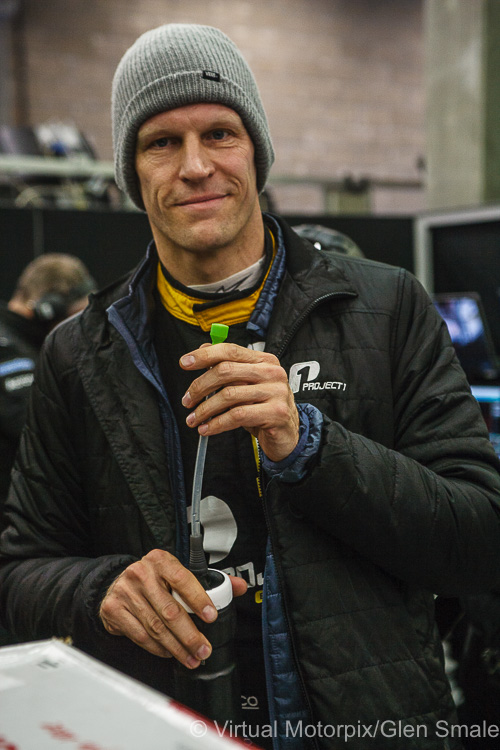

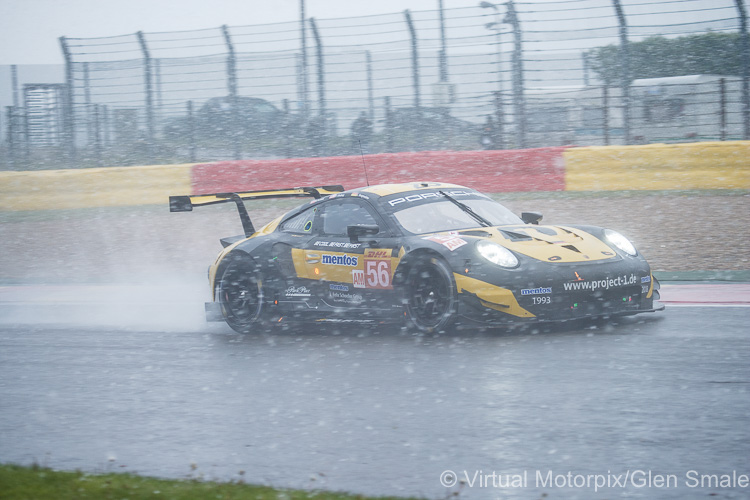
It is worth mentioning for the reader, that as I conducted the interview with Jörg Bergmeister the weather was warm for early May, but the forecast for the Saturday race was snow and rain! It seemed impossible to believe, but true to the forecast, the day dawned with falling snow and zero degrees Celsius. Asked what his expectations were for the race, Bergmeister admitted, “It is so hard to say, you know it is endurance racing and there are so many things that have to go right but could just as easily go wrong and therefore we just need to focus and do our best and not worry too much about the championship.” As it happened, the team finished in fifth place, once again picking up valuable points for the championship.

The WEC moved onto Le Mans, for the season finale. If the previous races all offered a healthy dose of uncertainty in the outcome, Le Mans was the king of uncertainty. I had found a tired and somewhat disconsolate-looking Jörg Bergmeister sitting in the back of the pit garage at around midnight of the 2018 race. As I approached him, fresh from a stint behind the wheel, a smile automatically broke out across his face, and he agreed to a quick interview. The 2019 Le Mans 24 Hour race turned out a little differently for the team as they pushed for the class lead, running second to the #85 Ford GT for the final ten hours of the race.
As the chequered flag came down on the 87th Le Mans 24 Hours, so too did the second-place finish in class signal that the GTE Am class had a new world championship team. A jubilant Team Project 1 justifiably celebrated their championship which, a year earlier, had started with some uncertainty as they found their way in the WEC series. The team had survived a dramatic car fire in Sebring and snow at Spa, to come out on top in the world championship. But there was more to come, as the ACO announced that the #85 Ford GT had been disqualified for having an over-sized fuel bladder, and this decision promoted the #56 Team Project 1 to a class win at Le Mans. Surely it is every team’s dream to win Le Mans, but to do so in their debut year is truly special.
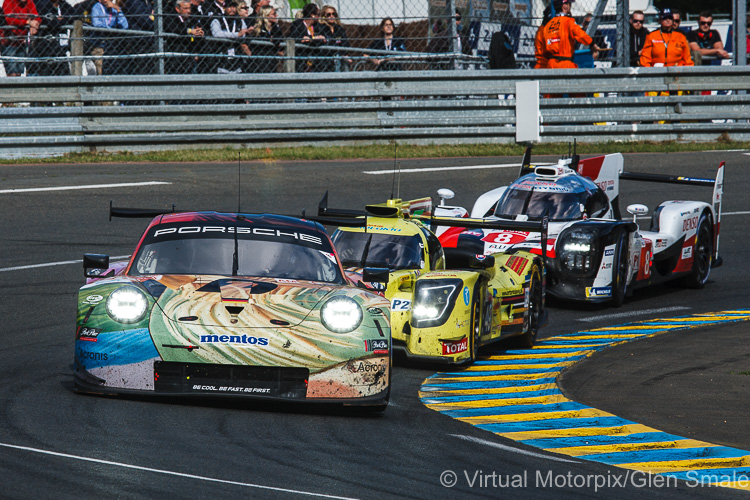
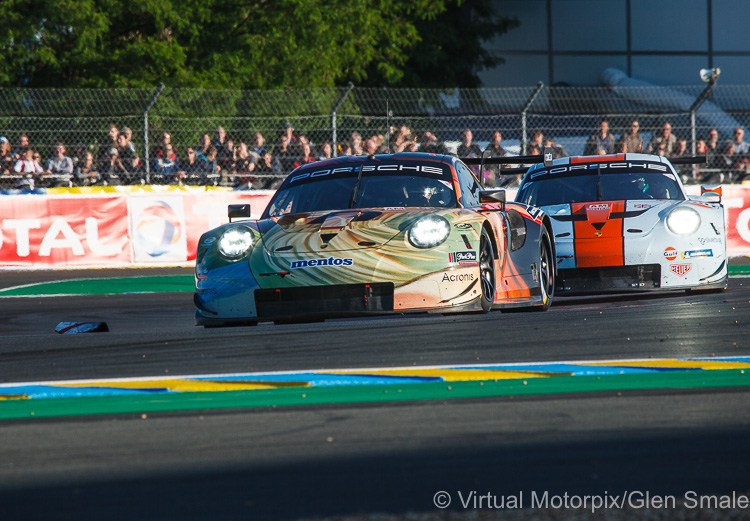
Looking Ahead to the 2019/2020 WEC Season
Speaking to Jan Bodenbach, the team’s spokesman, I asked him at the Spa race in May if they would carry on with their very full race programme, and would this include the WEC. He said that they would most certainly be doing so, and he hinted at a second car in WEC. This was still to be confirmed at that point, but at the ACO press conference at Le Mans on 14 June, it was announced that Project 1 would indeed be fielding two cars in the 2019/2020 WEC season. Bodenbach, “It makes sense budget wise, because running two cars is not much more expensive than just running the one.”
Ensuring the future
In 2005, Tolimit (in-house Project 1 public relations agency founded by Hans-Bernd Kamps) founded the Deutsche Post Speed Academy which is one of the most successful academies in Germany. Timo Glock and Nico Hülkenberg came through this Deutsche Post Speed Academy. We have now changed that into a system called Fast Track Racing Centre (FTRC), which looks after teams and drivers in motorsport and tries to optimise the processes to help them win. And Axel Funke is the CEO of FTRC, and we integrate him as our team principal (Project 1) for that reason, because he has the knowledge from the FTRC Academy to know what has to be done to improve personal performance.
With both their successful track record and with their eyes firmly on the future, Team Project 1 are without doubt the team to watch in the future. They have tasted victory and success at world championship level, and they will certainly be hungry for more of the same.
Written by: Glen Smale
Images by: Virtual Motorpix/Glen Smale


